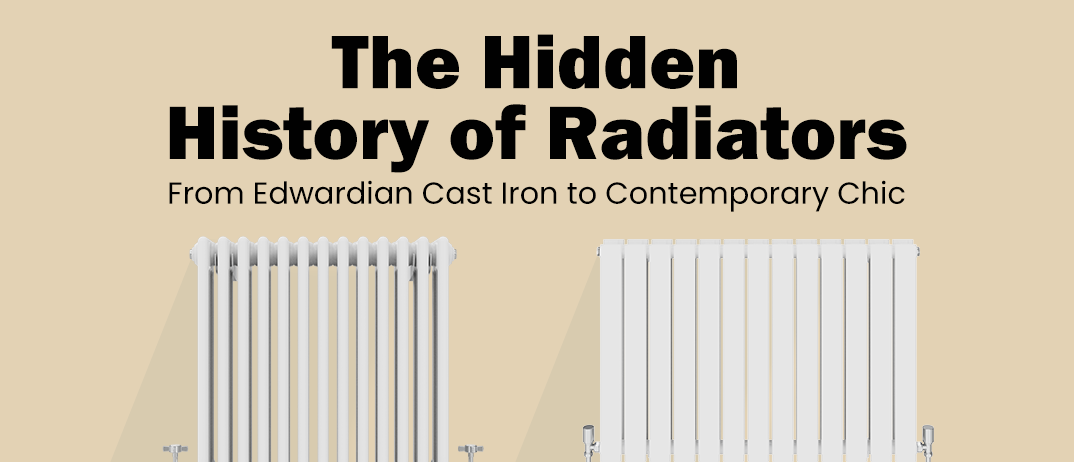When we think of radiators, most of us simply picture the white metal unit heating our living room. But radiators have a fascinating and largely overlooked design and engineering history especially in the UK. From ornate cast-iron heating columns in grand Victorian homes to sleek, vertical designer radiators in today’s smart interiors, this humble heating appliance has evolved alongside British architecture, lifestyles, and climate needs.
In this post, we’ll explore the origins, transformation, and modern-day relevance of radiators in British homes along with guidance on restoring vintage models and choosing radiators that complement traditional or modern interiors.
1. Origins: How Radiators Made Their Way to the UK
Radiators originated in the 19th century as part of steam heating systems. Initially invented and refined in Russia, Germany, and the US, they made their way into British homes during the late Victorian and Edwardian periods when hydronic (hot water) systems became popular.
Timeline Snapshot:
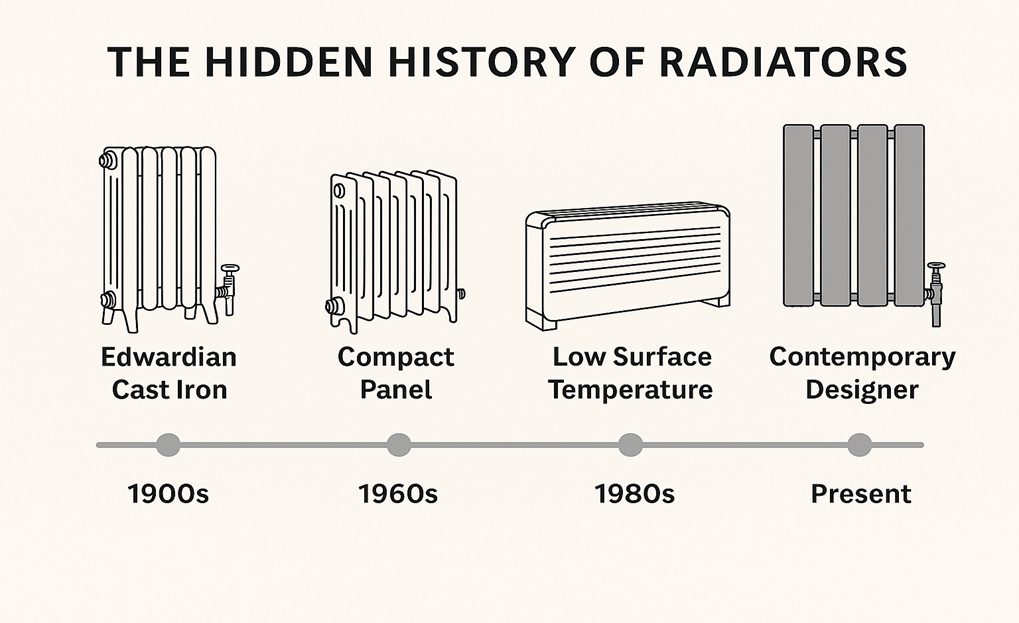
2. Cast Iron Radiators: Style and Substance
In Victorian and Edwardian homes, radiators weren’t just functional, they were decorative features. Cast iron radiators with ornate scrolls and fluted columns became symbols of status.
Characteristics:
- Heavy, durable, high heat retention
- Take longer to warm up, but radiate heat for hours
- Often placed under large sash windows
Popular in:
- Georgian, Victorian, and Edwardian properties
- Schools, libraries, public buildings
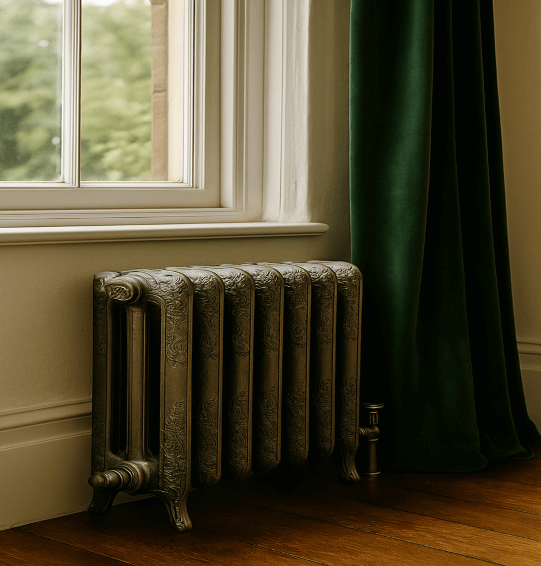
3. The Post-War Era: Panel Radiators and Pragmatism
After WWII, British housing design prioritised functionality and cost-efficiency. This gave rise to the standardisation of pressed steel panel radiators still common in homes today.
Personality Traits:
- Lightweight and easy to mass produce
- Wall-mounted with uniform white enamel finishes
- Typically rectangular, with convector fins inside for heat efficiency
These radiators filled the need for affordable, efficient heating in thousands of council homes and post-war rebuilds.
Did You Know?
In the late 1800s, radiators were a status symbol in British homes. Wealthy Victorian households often painted them gold or bronze to complement ornate interiors.
4. The 1990s Onwards: Radiators as Interior Design Elements
In the late 20th century, heating engineers and interior designers began to look at radiators with fresh eyes. With the rise of open-plan living and interior style influencers, radiators began to evolve as statement pieces.
Modern Radiator Trends:
- Vertical radiators to save space
- Anthracite and matte finishes
- Designer towel rails in bathrooms
- Column radiators in colour-matched finishes
Today, you can choose from hundreds of finishes, materials, and smart-enabled models that blend or boldly contrast with your interiors.
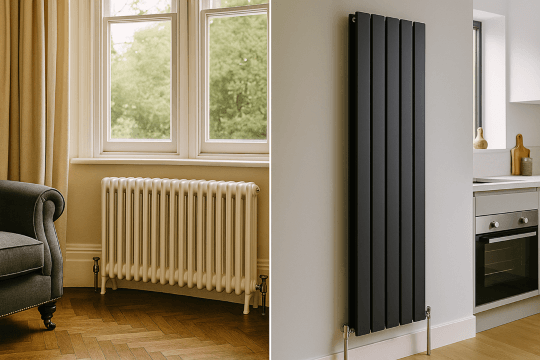
5. Restoring Vintage Radiators in the UK
For period property owners, restoring a vintage cast iron radiator can add authenticity and charm. Many UK-based companies now offer refurbishment services.
Restoration Steps:
- Remove and inspect for leaks or rust
- Sandblast and repaint (colour-matching available)
- Replace valves and test for pressure
- Reinstall with modern plumbing compatibility
Cost Guide:
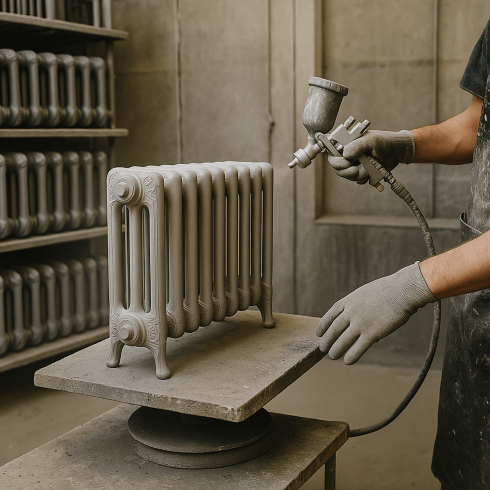
6. Choosing the Right Radiator for a Period or Modern Home
Not every radiator fits every room. If you're decorating a traditional home or new build, here’s how to match radiator styles:
7. The Future of Radiator Design
Looking ahead, radiator technology continues to evolve. With the UK’s net zero goals and rising energy awareness, we’re seeing:
- Low-temperature radiators compatible with heat pumps
- Aluminium radiators with fast responsiveness
- Smart radiator valves with room-by-room app control
- Designer radiators made with recycled materials
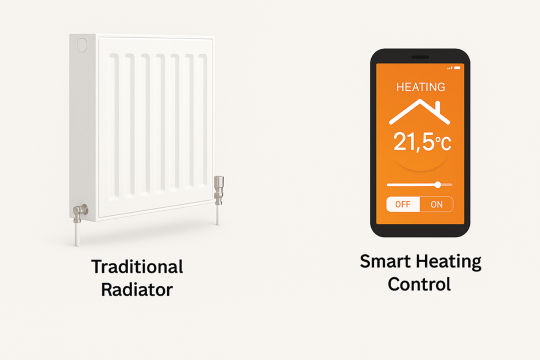
Final Thoughts: Past Meets Present
The radiator may be an everyday item but its story is anything but ordinary. From the ornate cast iron columns of Edwardian homes to the digital smart radiators of the 21st century, radiators have reflected the UK’s evolving sense of comfort, design, and energy.
Whether you’re restoring an original unit or selecting something modern that aligns with your décor, remember that your radiator is part of a design tradition that’s been heating British homes for nearly two centuries.
FAQ's
Yes, they retain heat well and are ideal for homes that stay warm for long periods. They’re slower to heat but stay warmer longer.
A professional can sandblast, pressure-test, and repaint it with modern, plumbing-compatible parts. Costs range from £200–£400 depending on size and condition.
Absolutely. With updated valves and connections, older radiators can integrate into modern central heating systems.

